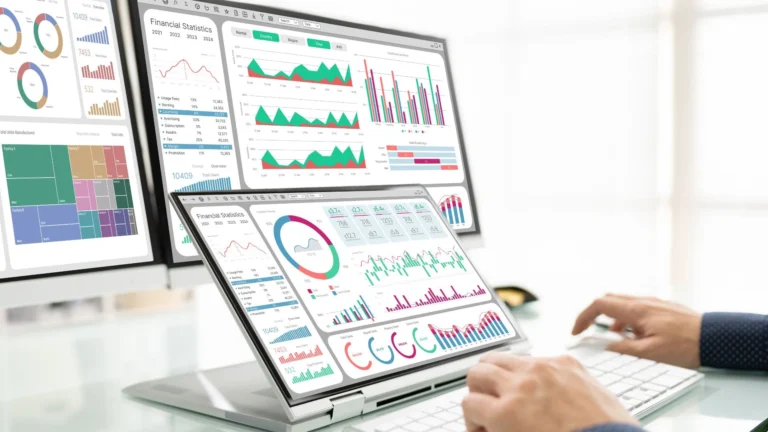Top 10 SAP ERP Features Every Accountant Should Know in 2025

- Introduction to SAP ERP Features
- 1. General Ledger (GL) & Chart of Accounts
- 2. Accounts Payable & Receivable (AP/AR)
- 3. Fixed Assets Management
- 4. Financial Close & Reconciliation Automation
- 5. Audit Trail, Controls & Compliance
- 6. Multi‑Entity Consolidation & Multicurrency Handling
- 7. Real‑Time Analytics & Dashboards
- 8. Automation & Workflow Tools
- 9. Integration with Other Modules and Systems
- 10. Cloud & On‑Premise Deployment / Scalability
- Conclusion
Introduction to SAP ERP Features
In today’s fast-paced financial landscape, accountants face mounting pressure to close books faster, ensure compliance, and deliver real-time financial insights. For many organizations—especially in India—SAP ERP has become the backbone of financial operations. But with such a vast platform, it’s essential to understand which SAP ERP features truly matter for accounting professionals.
Whether you’re working with SAP S/4HANA or transitioning from ECC, these are the top 10 SAP ERP features every accountant should know to maximize accuracy, efficiency, and compliance.
1. General Ledger (GL) & Chart of Accounts
The General Ledger is at the heart of SAP’s financial module. SAP S/4HANA offers parallel ledgers, enabling you to maintain multiple accounting standards (like IND AS and IFRS) simultaneously. Accountants can define flexible Chart of Accounts structures, segment financial reporting by cost centers or business units, and manage currency conversions for international operations.
The ability to post to specific periods and maintain audit trails for each ledger ensures transparent and compliant financial records.
2. Accounts Payable & Receivable (AP/AR)
Efficient invoice management is a game-changer. SAP ERP automates accounts payable (AP) and receivable (AR) processes, from invoice capture to approval and reconciliation. You can define vendor-specific credit terms, handle customer disputes, and set up aging reports to track overdue payments.
Seamless integration with procurement (P2P) and sales (O2C) cycles minimizes errors and ensures real-time cash flow visibility.
3. Fixed Assets Management
Managing assets manually is error-prone and time-consuming. With SAP’s Fixed Asset Accounting, you can:
Automate depreciation calculations
Track the full lifecycle of an asset (acquisition to retirement)
Handle asset transfers, revaluations, and disposals
Generate reports for statutory and internal purposes
This is especially useful for Indian companies needing compliance with Companies Act depreciation schedules and IND AS reporting.
4. Financial Close & Reconciliation Automation
Closing books shouldn’t take weeks. SAP’s Financial Closing Cockpit streamlines your closing process by automating repetitive tasks like:
Bank reconciliations
Ledger validations
Intercompany matching
Variance analysis
With checklists, workflow approvals, and alerts, accountants stay on track, reducing delays and manual errors.
5. Audit Trail, Controls & Compliance
In highly regulated environments, auditability is non-negotiable. SAP ERP supports:
Detailed audit trails on every transaction
Segregation of duties (SoD) to prevent fraud
Role-based access controls for secure data access
Integration of Indian regulatory compliance (like GST, TDS, and IND AS)
You can generate compliance reports for GST returns or internal audits with just a few clicks.
6. Multi‑Entity Consolidation & Multicurrency Handling
For companies with multiple branches or legal entities, SAP offers centralized financial consolidation tools. You can:
Combine statements across subsidiaries
Automate currency translations
Manage intercompany eliminations
Address rounding rules and exchange differences
This feature is vital for Indian conglomerates operating internationally or across multiple states with different tax jurisdictions.
7. Real‑Time Analytics & Dashboards
SAP S/4HANA’s in-memory database powers real-time dashboards and financial KPIs. Accountants can monitor:
Revenue trends
Profitability analysis
Budget vs actuals
Liquidity positions
With Fiori apps and embedded Business Intelligence (BI), you gain instant access to drill-down insights—no need to wait for EOD reports.
8. Automation & Workflow Tools
One of the standout features of SAP ERP is its workflow automation. From invoice approvals to journal entry validations, automation reduces manual intervention, speeds up processes, and minimizes risks.
SAP also offers automated alerts and escalations, ensuring critical tasks don’t slip through the cracks.
9. Integration with Other Modules and Systems
SAP’s modular architecture enables tight integration between finance and operations. Accountants benefit from connected data across:
Procurement & inventory (P2P)
Sales & receivables (O2C)
Payroll & HR
External tools via APIs
This interconnectedness ensures data consistency, reduces reconciliation headaches, and supports end-to-end visibility.
10. Cloud & On‑Premise Deployment / Scalability
SAP gives companies the flexibility to deploy either on-premise (SAP ECC or S/4HANA) or on cloud infrastructure. For Indian businesses scaling fast, SAP S/4HANA Cloud offers:
Faster upgrades
Lower IT maintenance
Greater scalability
Built-in compliance tools
Transitioning from ECC? SAP provides migration paths that retain your accounting structure while enhancing performance.
Conclusion
SAP ERP isn’t just for IT or finance managers—it’s a powerful toolkit for accountants looking to streamline processes, ensure compliance, and gain strategic insights. From financial close automation to real-time dashboards, each feature plays a crucial role in helping accountants work more efficiently, faster, and smarter.
If you’re an accountant navigating SAP, mastering these 10 features is a strong step toward professional agility and operational excellence.